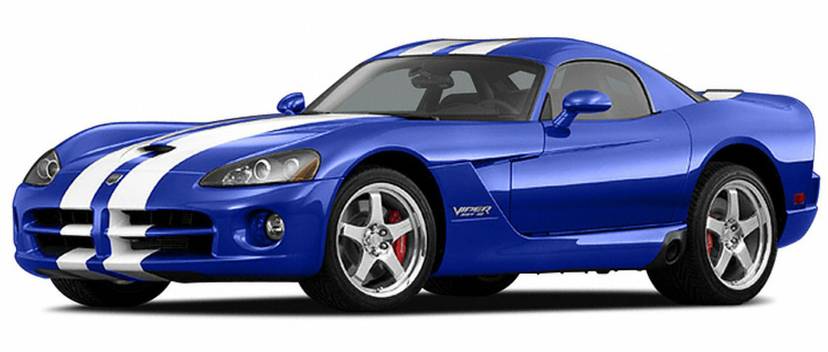
Driving a Dodge Viper on regular streets, behind its rockin’ 510-horsepower V-10, is like walking a mountain lion on a leash. The brute power is contained, the muscular force reined in. The beast can only amble, using maybe a tenth of its prowess to negotiate its surroundings. Unless, of course, it decides to turn on its trainer. No, the Viper never turned on me, although I occasionally let it roar. In the real world, with real traffic and police officers, it’s hard to allow more than a short burst from the booming exhaust pipes. So it with great anticipation that I brought a 2006 Viper SRT10 convertible down to Firebird International Raceway in Chandler for a romping run on the track. A big plus: I had the quarter-mile drag strip and road course all to myself. Although built for the street, Viper feels best on the race track. With an accompaniment of muscle-car thunder, Viper hunkered down and charged through the course. The monster torque of the V-10 catapulted the roadster on the drag strip, while the stiff suspension and tenacious tire grip whipped it through the twisting backstretch. Now that’s fun. A lot better than burbling through traffic, anyway. Today’s Viper may be less intense than the no-holds-barred original, but it’s still a no-nonsense performance machine. Power windows, convertible top and satellite radio make it feel downright cushy. But the buffeting ride, tight cockpit and paltry gas mileage signify that the compromises are few.
PERFORMANCE: Viper’s V-10 is like a rocket booster, a churning mass of solid torque that propels the nearly 3,500-pound roadster to 60 mph in less than four seconds. Yet it can idle through traffic as docile as a mildly tuned sedan engine. Yes, gas mileage is abysmal and there’s a $3,000 federal gas-guzzler tax for the privilege of burning up all that precious fuel. The massive engine power allows the gearing to be really tall. At 75 mph, the engine loafs along in sixth at about 1,400 rpm. The shift mechanism was balky, though, requiring too much finesse and concentration.
DRIVABILITY: Although the ride is not as brutal as the original Viper, it can still rattle your teeth. The payoff is quick, flat cornering, race-car style. The only nod to modern electronic controls is antilock brakes. If you feel the need for electronic stability control or other driving aids, look elsewhere. And forget about such niceties as cruise control. The disc brakes are incredible. The steering is very quick and precise, much improved over past Vipers.
STYLING: Viper aficionados were unimpressed by the 2003 makeover, feeling that Dodge had softened Viper’s uniquely macho style. Maybe so, but the red test car was a constant attention grabber. Besides, there’s much to be said for a manual top that fits and folds easily into the trunk, when the roof on the original roadster looked like an ill-fitting toupee and barely kept out the rain.
INTERIOR: The driver’s space was tight for my lanky self, and nobody carrying extra pounds will find comfort here. There’s hardly any stowage for loose items, and the trunk is minuscule. The wide transmission tunnel pushes the pedals off to the left, which takes some getting used to.
BOTTOM LINE: Pure thunder. Viper may be toned down in sports-car rawness, but the power and performance are still absolute. And if you think $82,000 is a lot of money, try pricing comparable European sports cars of similar capabilities.
Dodge Viper SRT10
Vehicle type: Two-passenger, two-door convertible, rear-wheel drive. Engine: 8.3-liter V-10, 510 horsepower at 5,600 rpm, 535 pound-feet torque at 4,200 rpm. Transmission: Six-speed manual. Wheelbase: 98.8 inches. Overall length: 175.6 inches. Curb weight: 3,430 pounds. EPA rating: 12 city, 20 highway.
Highs: Awesome power, exotic styling, bragging rights. Lows: Stiff and noisy, grim gas mileage, tight cockpit and trunk.
Pricing
Base price: $81,895. Price as tested: $86,640. EXTRAS -Polished aluminum wheels, $700. -Sirius satellite radio, $195. -Shipping, $850. -Gas-guzzler tax, $3,000.










